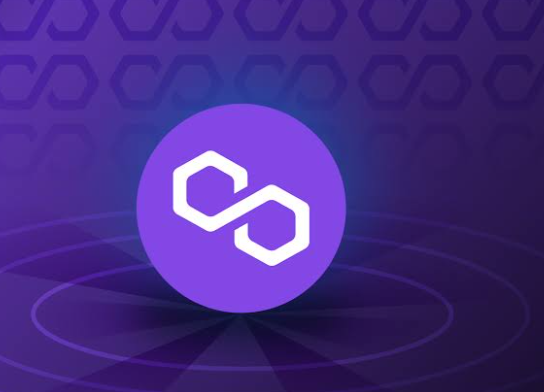Polygon’s POL Rebrand: What’s Stopping Its Rise to $1?
Introduction: Polygon’s Rebrand and Price Struggles
Polygon, formerly known as MATIC, rebranded its token to POL to improve scalability within Ethereum’s Layer-1 ecosystem. The switch initially generated excitement, as POL’s value surged 18% before quickly declining. In this article, we examine why POL has struggled to reach the $1 mark and explore the community’s reaction to its new inflationary token model.
The Transition from MATIC to POL: What Changed?
A Shift Beyond Just the Name
Polygon’s rebrand from MATIC to POL involved more than a superficial name change. This transformation also brought new goals, a revised token structure, and modified economics. Unlike MATIC, which focuses solely on Layer-2 scaling, POL aims to link multiple Layer-2 chains, creating a cohesive ecosystem.
Goals Behind POL: Scalability and Interoperability
Enhancing Ethereum’s Layer-2 Capabilities
Polygon’s development team introduced POL to provide Ethereum with a scalable, interoperable network by bridging multiple chains. This aims to make POL a vital player within Ethereum’s ecosystem, positioning it alongside Layer-2 competitors like Arbitrum and Optimism.
Tokenomics Overhaul: The Shift to an Inflationary Model
From Deflationary MATIC to Inflationary POL
A significant change with POL is its new inflation-based model. Unlike MATIC, which had a fixed supply of 10 billion tokens, POL introduces a 2% annual inflation rate. Half of this inflation rewards validators, while the remaining supports ongoing ecosystem development. Despite the benefits, this shift has raised concerns about potential inflationary impacts on POL’s value.
Market Reaction: Why POL Hit Record Lows
Low Trading Volume and Investor Sentiment
Despite its ambitious goals, POL’s value recently dropped to a historic low of $0.3146, leaving investors uncertain about its future. Trading volume has also fallen to around $76 million daily, pushing POL down in rankings and making it one of the worst-performing altcoins over the past week with a 14.6% decline.
Technical Analysis: Can POL Realistically Hit $1?
Analysis of Price Trends and Challenges
POL’s price has struggled to surpass the $1 mark since April 2024. Technical indicators suggest a slim chance of reaching $1 soon, though analysts advise caution. While potential growth exists, broader market conditions remain uncertain.
Short-Term Challenges for POL
Signals of Weakening Demand
In the short term, POL’s price chart reveals some warning signs. The Stochastic Relative Strength Index (RSI) indicates declining demand, while a negative Chaikin Money Flow suggests major holders are selling, hinting at weak market sentiment.
Long-Term Potential: Could POL Make a Comeback?
Optimistic Projections Despite Short-Term Struggles
Analysts remain cautiously optimistic about POL’s long-term potential. A short-term target of $0.89 and a long-term goal of $8 are possible if market conditions stabilize and investor sentiment improves.
Market Context: Ethereum’s Influence on POL
How Broader Crypto Trends Impact POL
POL’s struggles reflect wider cryptocurrency market dynamics, with Ethereum’s performance against Bitcoin impacting Layer-2 solutions like Polygon. Investors worry that continued pressure on Ethereum could hamper POL’s growth and adoption.
Polygon’s Strategic Partnerships: Are They Boosting POL?
High-Profile Collaborations and Their Impact
Polygon has partnered with major brands like Nike, Starbucks, Mastercard, Adobe, and Google. While these partnerships strengthen Polygon’s presence in the blockchain world, their direct effect on POL’s price remains to be seen.
Real-World Use Cases and Adoption
Brands like Nike and Starbucks have implemented Polygon for NFT and loyalty programs, respectively. However, without significant adoption, these partnerships have yet to impact POL’s price meaningfully. Many traders believe it will take time for these collaborations to influence market adoption and demand.
Community Reaction: Mixed Sentiment on POL’s Inflationary Model
Concerns Over the 2% Inflation Rate
The Polygon community has mixed feelings about POL’s inflationary model. While some support the move to expand the ecosystem, others worry that the 2% inflation rate could dilute POL’s value, particularly when compared to deflationary assets like Bitcoin.
Validator Rewards and Network Governance
Allocating 1% of token emissions to incentivize validators is essential for Polygon’s infrastructure. However, there are concerns that this could lead to overinflation if adoption and demand do not keep pace.
Competitive Pressures: POL’s Place Among Layer-2 Solutions
Facing Rivals Like Arbitrum, Optimism, and zkSync
As POL strives to establish itself as a popular Layer-2 solution, it faces strong competition from platforms like Arbitrum, Optimism, and zkSync. POL’s unique emphasis on interoperability and scalability gives it an edge, but success will depend on continued innovation and adoption.
Cheap Remote Crypto Mining for you – Click Here
Conclusion: Will POL Reach the $1 Milestone?
The rebrand from MATIC to POL represents a fresh start for Polygon, focusing on scalability and ecosystem cohesion. Yet, challenges such as low trading volume, inflationary concerns, and cautious investor sentiment pose obstacles to reaching $1.
For POL to succeed, Polygon needs to strengthen community support, increase trading volume, and leverage partnerships effectively. If Polygon can deliver value for network participants and token holders, POL’s path to $1 could become more achievable. Until then, the journey remains challenging but filled with potential.


